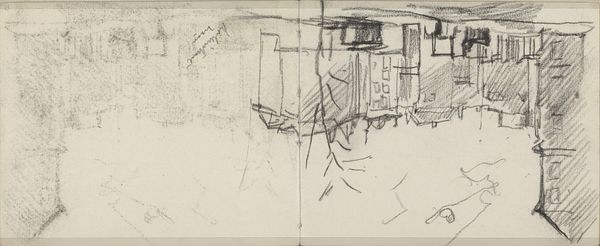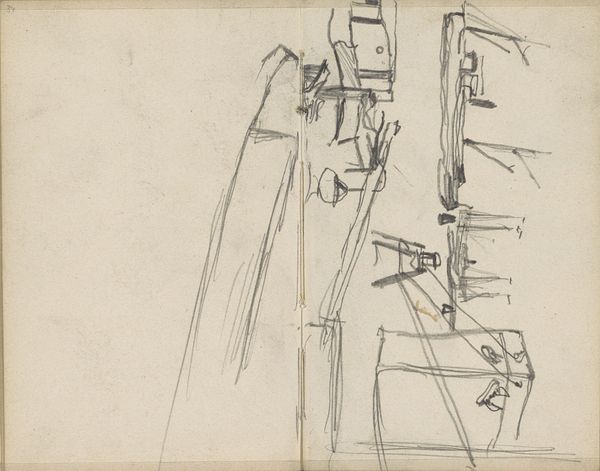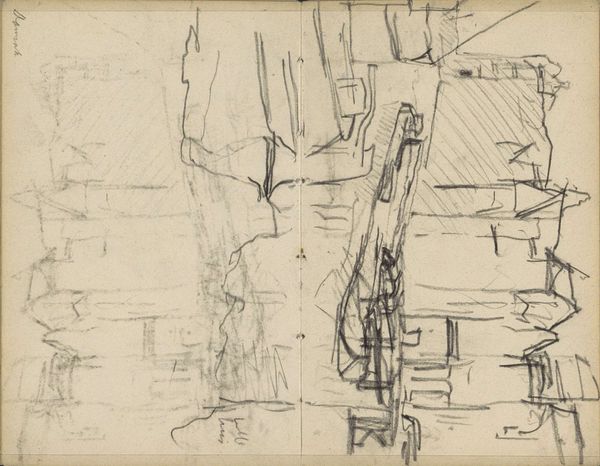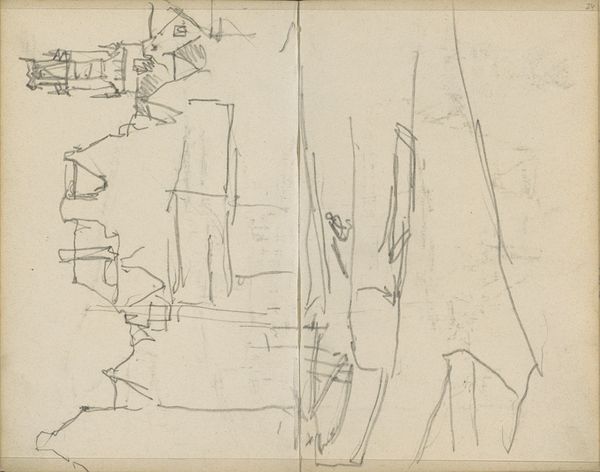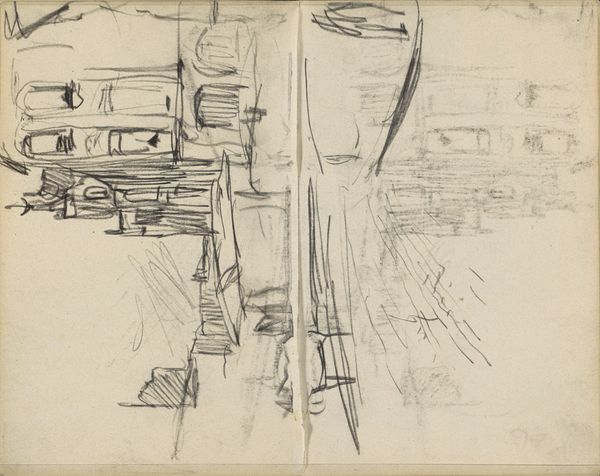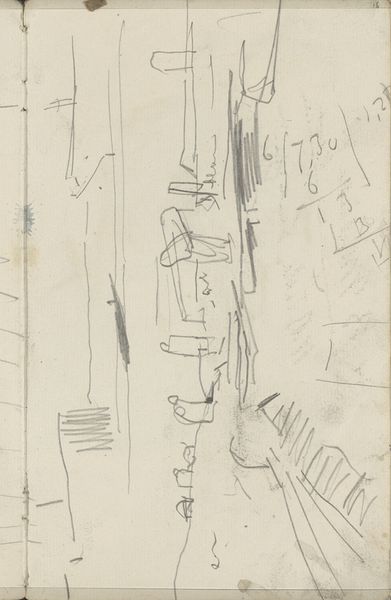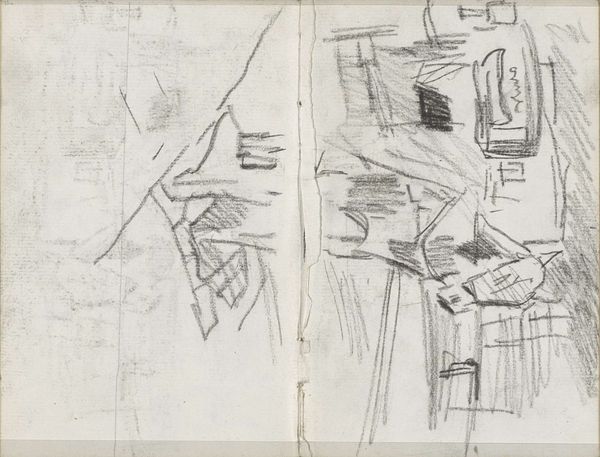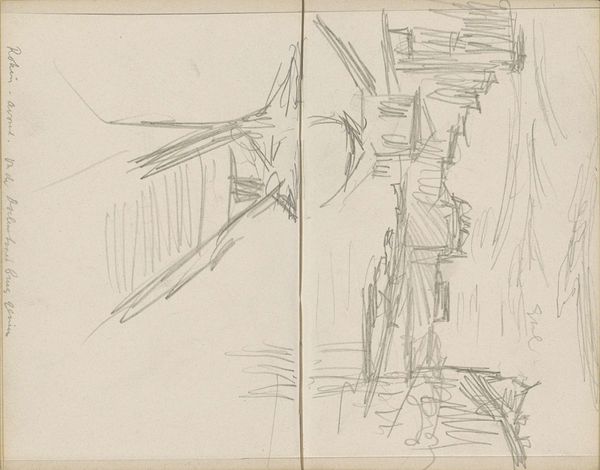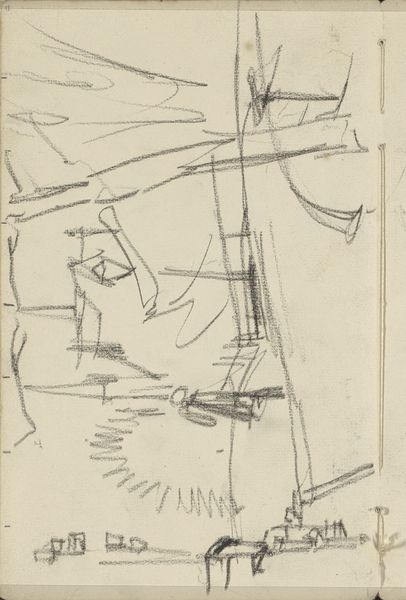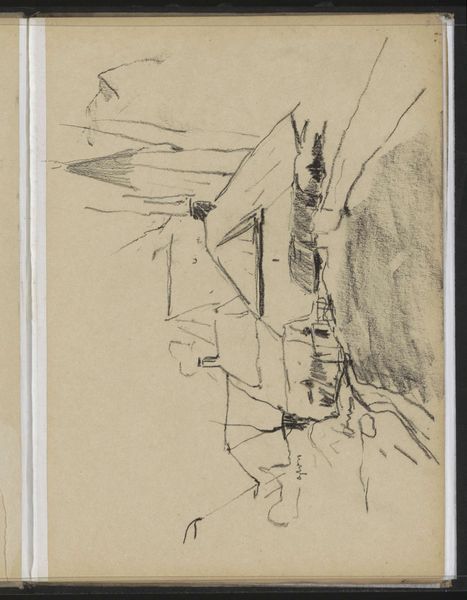
drawing, pencil
#
drawing
#
amateur sketch
#
quirky sketch
#
impressionism
#
personal sketchbook
#
idea generation sketch
#
sketchwork
#
detailed observational sketch
#
sketch
#
pencil
#
line
#
sketchbook drawing
#
cityscape
#
storyboard and sketchbook work
#
sketchbook art
#
realism
#
initial sketch
Copyright: Rijks Museum: Open Domain
Curator: This sketch, titled "Straat met figuren, mogelijk te Londen," which translates to "Street with figures, possibly in London," was created by George Hendrik Breitner around 1886. It's a pencil drawing currently held at the Rijksmuseum. What's your initial reaction? Editor: It feels unfinished, almost ghostly. The figures are mere suggestions, and the cityscape itself seems like a fleeting impression captured in very thin lines. It feels quite ephemeral, yet energetic, a stark snapshot in time. Curator: Considering Breitner's fascination with capturing urban life and the rapid social changes in late 19th-century Amsterdam and, perhaps, London here, how might we interpret this seemingly simple sketch within those contexts? Think about what it means to represent the modern city. Editor: Well, if this *is* London, think about the social strata on display. You’ve got nascent documentary impulse; a raw portrayal, before the area’s sanitized for popular consumption in picture postcards, etc. The lack of crisp definition, especially, speaks to the transient experience of city dwellers in that period. One sees only flashes of humanity. We’re given the barest information here, almost a record. Curator: I think Breitner was part of a bigger historical movement towards realism in art. Think Courbet, or even Zola, documenting life as it was experienced rather than how it was imagined. Consider the socio-economic undercurrents in this choice: breaking from traditional high art that so often centered bourgeois sensibilities and instead taking interest in a broader societal swath. What kind of meaning does that project onto something as seemingly insignificant as an urban sketch? Editor: Absolutely. This piece becomes significant through that historical lens. The political nature of urban scenes like these lies in exposing the real lives contained within the urban experience, the unseen people, particularly workers and poor inhabitants largely unacknowledged. Art begins working in this period in the way sociology and photojournalism also will; together it’s a radical change in perspective toward marginalized populations. Breitner documents and perhaps critiques that invisibility with pieces such as this one. Curator: I concur. Ultimately, it serves as a tangible document that captures the spirit of the time; of cities evolving. I find Breitner’s capture and rendering of the modern world both accessible and insightful in ways still relatable to contemporary audiences. Editor: Yes. It's a powerful reminder that even the simplest sketches can provide profound insights into historical realities.
Comments
No comments
Be the first to comment and join the conversation on the ultimate creative platform.
